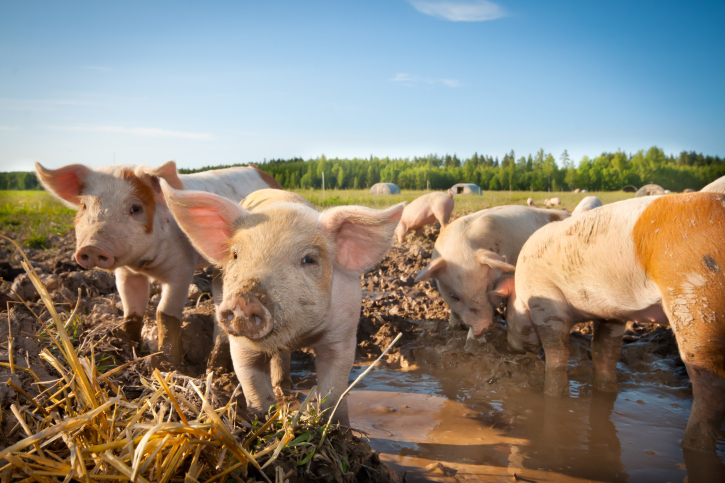
PEDv is an acronym for Porcine Epidemic Diarrhea virus, and the disease has made its way to the United States for the first time. It is believed that the infection originated from hogs imported from China, but the transmission method is so far unknown. Analysts at Rabobank predict a shortfall of 11% in 2014 hog production, with production down by as much as 15% to 25% in the months of August, September and October.
At the end of March, the number of hogs was down 3% year-over-year, and margins could reach the unheard of level of $60 per head, according to Rabobank research. Pork exports also rose 4.5% in February.
The USDA suggests that demand for pork products is higher among consumers due to the high prices for beef. Very high beef prices are turning consumers to pork, pushing the prices of bacon, ham and other products higher as well.
Poultry purchases are also rising, because prices for these products have remained flat-to-lower than they were a year ago. But these relative bargains are not expected to last either. Rabobank believes that chicken prices and margins will rise this spring and summer and that production needs to rise 8% to 9% to meet expected demand.
The bottom line is that meat of all kinds is set to take a bigger bite out of a household’s income.
ALSO READ: U.S. Consumers Continue to Pay More for Milk and Beef
Get Ready To Retire (Sponsored)
Start by taking a quick retirement quiz from SmartAsset that will match you with up to 3 financial advisors that serve your area and beyond in 5 minutes, or less.
Each advisor has been vetted by SmartAsset and is held to a fiduciary standard to act in your best interests.
Here’s how it works:
1. Answer SmartAsset advisor match quiz
2. Review your pre-screened matches at your leisure. Check out the advisors’ profiles.
3. Speak with advisors at no cost to you. Have an introductory call on the phone or introduction in person and choose whom to work with in the future
Get started right here.
Thank you for reading! Have some feedback for us?
Contact the 24/7 Wall St. editorial team.



